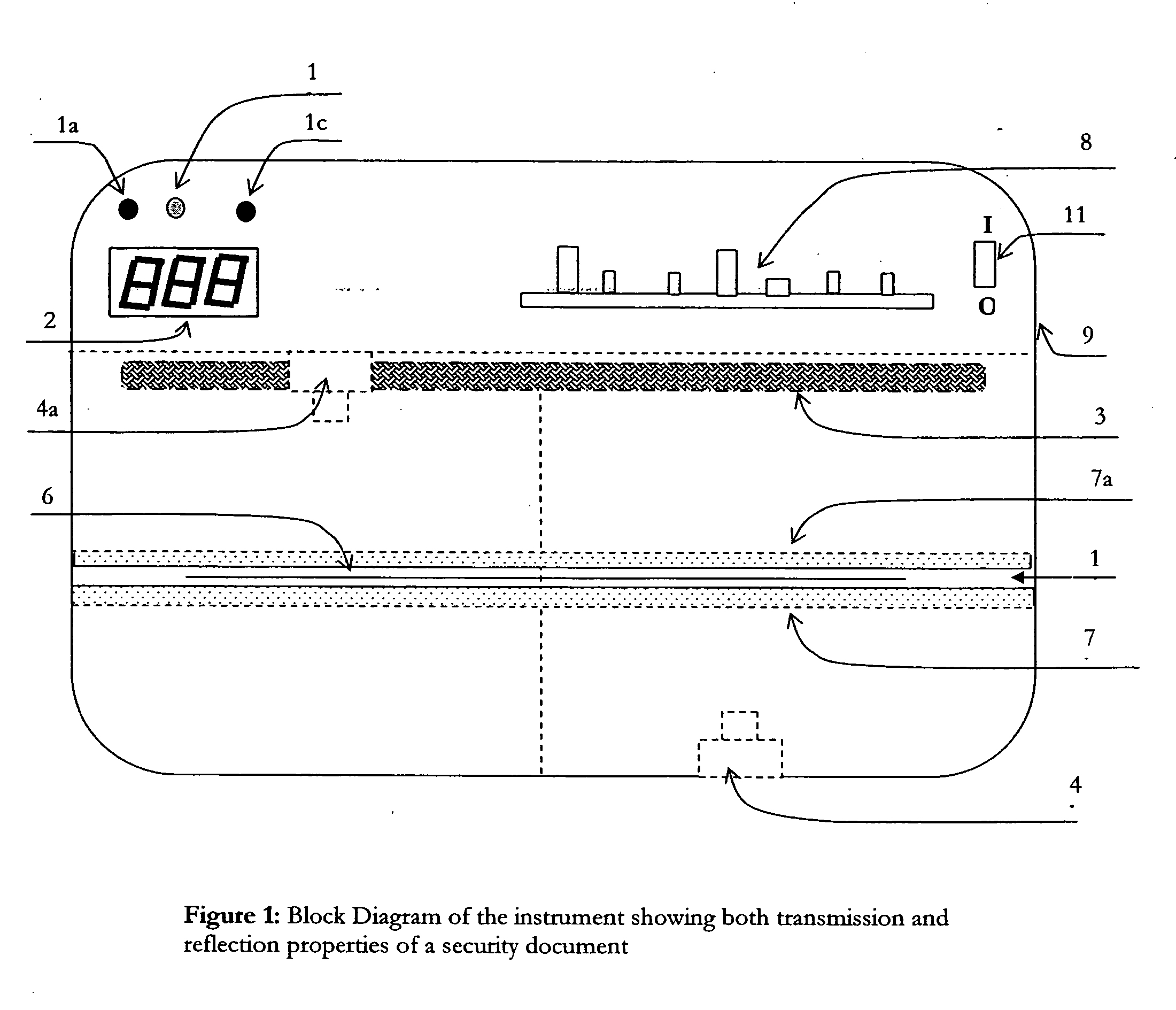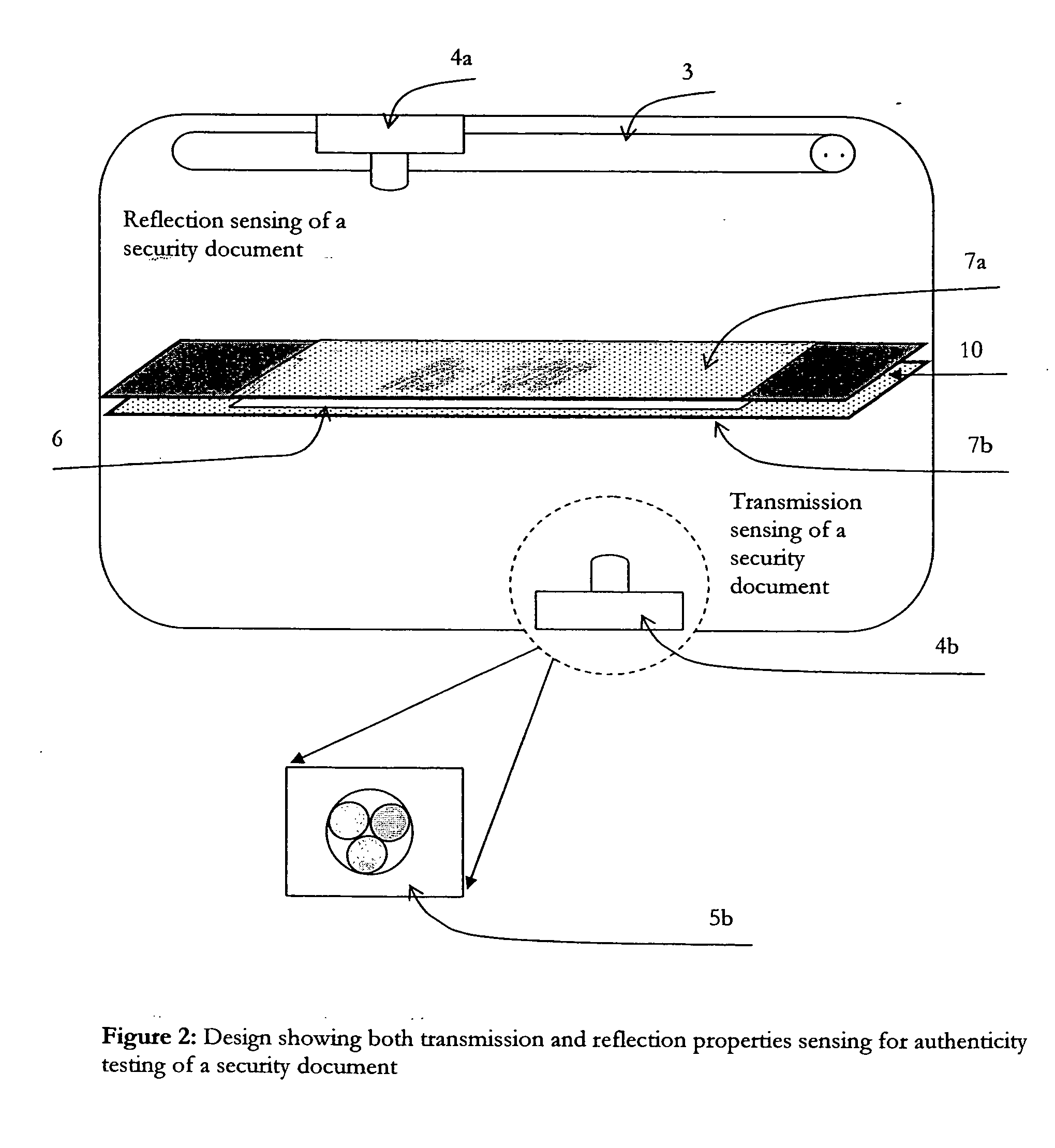Fake currency detector using integrated transmission and reflective spectral response
a technology of reflection spectral response and fake currency, applied in the field of automatic detection of currency notes, can solve the problems of common limitations, unable to stock standard samples either as images in the brain or physically corresponding currency notes of different denominations from various countries, and unable to yield misleading conclusions
- Summary
- Abstract
- Description
- Claims
- Application Information
AI Technical Summary
Benefits of technology
Problems solved by technology
Method used
Image
Examples
example 1
[0151] For experimental testing of the proposed apparatus, a fake Indian currency note of denomination ‘A’ (Series-2) was checked. Table I shows, that the yellow and red band reflection readings of the fake note were within the acceptable range, showing the note as genuine. However, all transmission and the blue band reflection readings of the fake note clearly identified it to be fake.
example 2
[0152] For experimental testing of the proposed apparatus, a fake Indian currency note of denomination ‘B’ (Series-2) was checked. Table II shows that the blue and yellow band reflection readings were out of the permissible range, while the red band indicated genuineness. The experiment shows that confirmation of a majority rule is essential for currency verification particularly for cleverly counterfeit notes incorporating all UV visible security features.
example 3
[0153] For experimental testing of the proposed apparatus, a fake Indian currency note of denomination value ‘A” Series-1 (old series, which did not contain any UV fluorescent feature but still in circulation) was checked. All the reflection data failed to identify it as a fake. However, all transmission data for all the bands were well beyond the permissible range. It concludes that properly weighted all reflection and transmission data is imperative to verify authenticity of a currency note.
PUM
 Login to View More
Login to View More Abstract
Description
Claims
Application Information
 Login to View More
Login to View More - R&D
- Intellectual Property
- Life Sciences
- Materials
- Tech Scout
- Unparalleled Data Quality
- Higher Quality Content
- 60% Fewer Hallucinations
Browse by: Latest US Patents, China's latest patents, Technical Efficacy Thesaurus, Application Domain, Technology Topic, Popular Technical Reports.
© 2025 PatSnap. All rights reserved.Legal|Privacy policy|Modern Slavery Act Transparency Statement|Sitemap|About US| Contact US: help@patsnap.com



